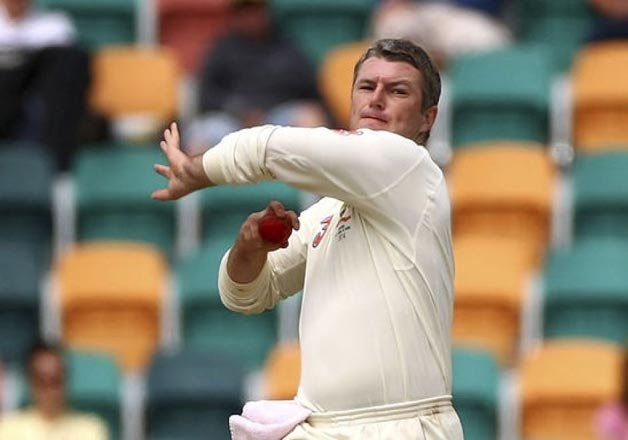Maximum revolutions are the essential ingredient to leg spin bowling
Stuart MacGill | May 30, 2023

As spin bowlers, ideally, we should aim to get maximum revolutions on the ball every delivery. The angle of our wrist at the point of delivery determines the way the ball behaves both in the air and off the pitch but the more revolutions, the more dramatically the ball will drop or drift in the air and the more quickly it will behave once it hits the pitch.
Maximum revolutions lead to deception through the air and explosions off the pitch. Putting it simply, more fizz equals more wickets.
Whilst there will be slight variations in pace through the air depending on what type of delivery you bowl this should never impact on the amount you are spinning the ball. To be clear, spin relates to revolutions, turn relates to sideways movement of the ball off the pitch.
There is more than one tool available to a wrist spin bowler wanting to maximise revolutions on the ball. Ideally you will understand all of them and aim to use as many as possible, although generally speaking we all have a strength that we rely on most of the time. Don’t feel bad about that, just understand that you can almost always spin it more.
Available tools include the following:
- Run up (or approach as I prefer to call it)
- Front arm/front side
- A full bowling arc
- Momentum & rotation
- Strength
Approach: I don’t care if you run, walk or crawl up to bowl provided it is a consistent preparation to release the ball in a strong, balanced manner. Your approach should be virtually identical every time you bowl your stock ball. How can you possibly expect to bowl consistently well if every ball is delivered from a different spot with a different feel and a different approach. Walking or running, there should be a gradual building of pace as you gather your tools and prepare to bowl. You should never feel unbalanced or rushed at the crease. Don’t try to do everything at the last moment.
Front side: Every bowler has been told to get their front arm up. Your coach is missing the point though. The sole purpose of your front arm is to activate the muscles in your side and subsequently use your entire upper body when you deliver the ball, not just your bowling arm. Use your front arm to get a stretch in your side, then pull down hard with everything you’ve got straight towards the target. When you are stretching upwards to activate those muscles in your side and your back, you might use your hand, elbow or shoulder as a starting point. Nothing is wrong; just get that stretch. I used my elbow, Shane Warne used his shoulder. Both worked! When you pull down towards the batsman, consider using a fist; maybe even imagine that you are bashing them on the helmet for a little extra oomph.
Bowling arc: Your bowling arm moves in a full arc throughout your action. Imagine a complete circle, not a half circle, which would indicate a rushed, short action. Straight arm not bent elbow. Right from the starting point of this loop you should be preparing to spin the ball as hard as you can. Spin the ball the whole way around the bowling arc, not just on release.
Momentum and Rotation: With all the energy you have put into spinning the ball and pulling down ferociously towards the batsman, it makes sense that you should continue on through the crease even after the ball has left your hand. We all know this as a follow through and its absolutely vital. For some reason, spin bowlers have recently decided that upon release they should virtually stop dead and wait for a return catch. Trust me, if you don’t follow through and complete your action, the ball with do nothing through the air and less off the pitch. Your chances of getting a caught and bowled are next to nothing. A decent follow though is four or five steps after release.
Having let go of the ball, drive your back hip, leg and knee straight down the pitch towards the target. Momentum should be up and over your front foot, not pivoting around it towards cover. Everything goes towards the target. Imagine your back leg is stepping over a box if that helps. In reality what will happen is that your body will rotate slightly towards first slip. Any more than this and you are making life difficult. I had a big issue with over rotation through my career. It helped me turn the ball big, but also resulted in more than my fair share of half trackers outside off stump. There is a happy balance which will leave you smiling.
Strength: Obviously its different as a child, but as you move through puberty and bowling over restrictions cease to be an issue, body strength becomes increasingly important. My theory was that if I bowled half the overs I was a chance of taking half of the wickets. You must have the physical ability to bowl as well in your final over as you did in your first. I know this is slightly controversial nowadays, but regardless of whether you bowl fast or spin, you have no alternative but to train as you hope to play. That means if you want to bowl 30 overs in a day, you should have done the same on the practice field. If you want to run a marathon, don’t practice for the hundred. Additionally get in the gym; weight and resistance training will ensure that you have the strength to push through the fatigue coming your way. For kids, encourage them to do body weight exercises like push ups, core strength work and chins. As you move into four and five day cricket, you will have to be able to wake up and do it all again in the morning. Bowling is hard work.
Finally, with reference to variations of turn and pace; always spin the ball as hard as you possibly can. The angle of your wrist on release determines the direction of turn, nothing else. If you want to bowl slightly slower, reach a little higher and if you want to bowl slightly quicker, pull down harder. Spin bowling is all about deception. Don’t let the batsman know what you’re trying to do by making things too obvious.
Simple really!








